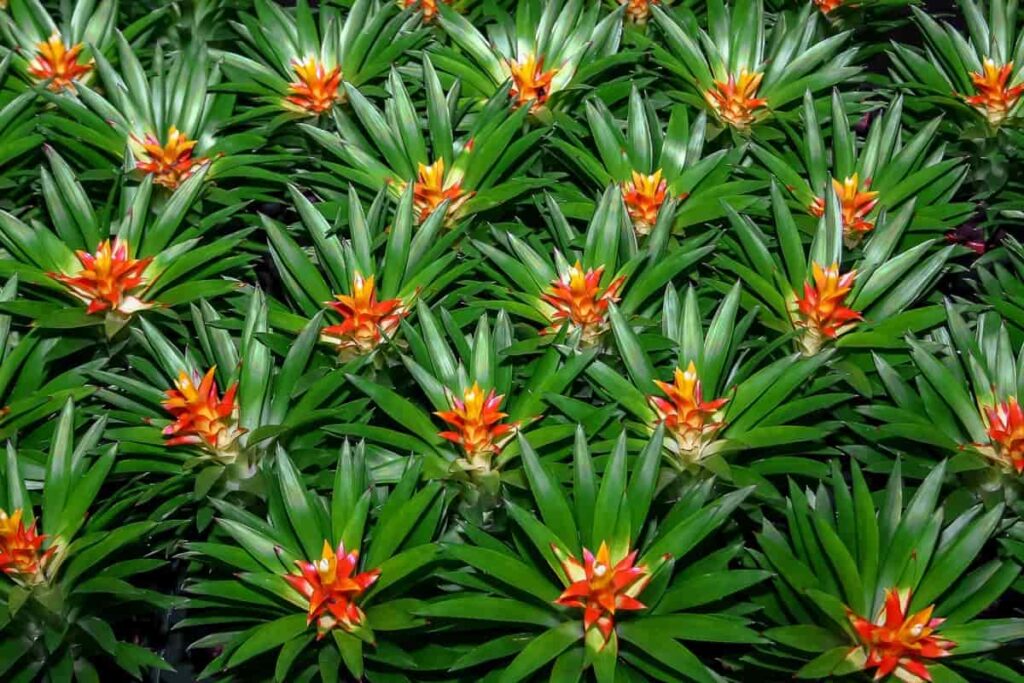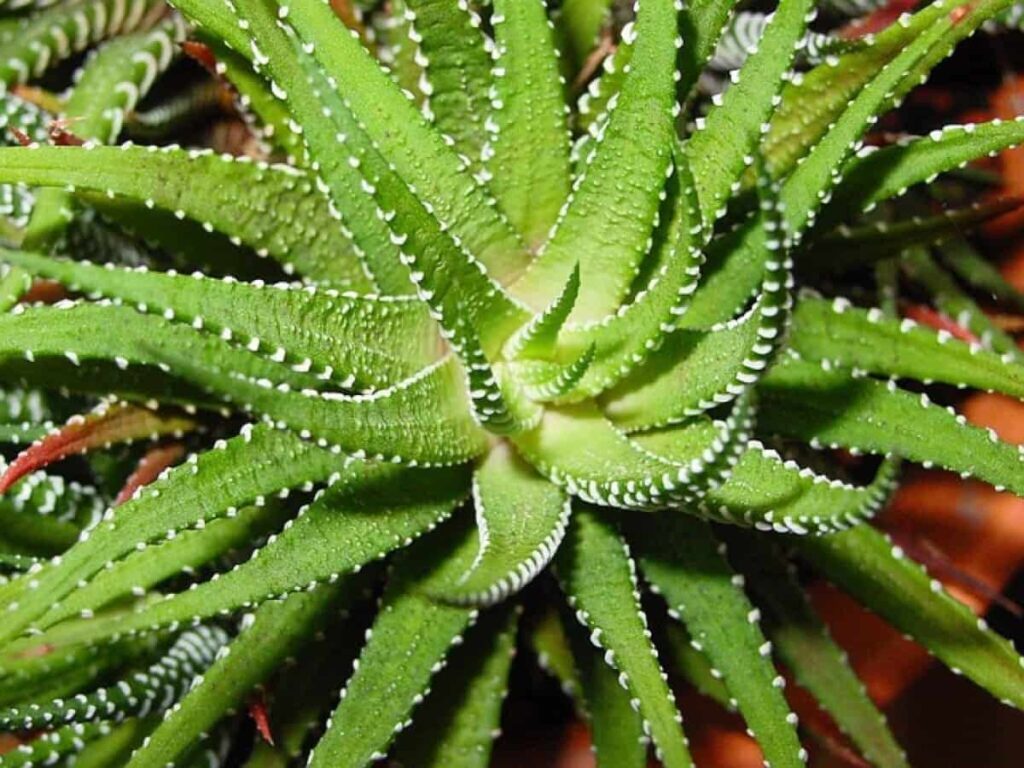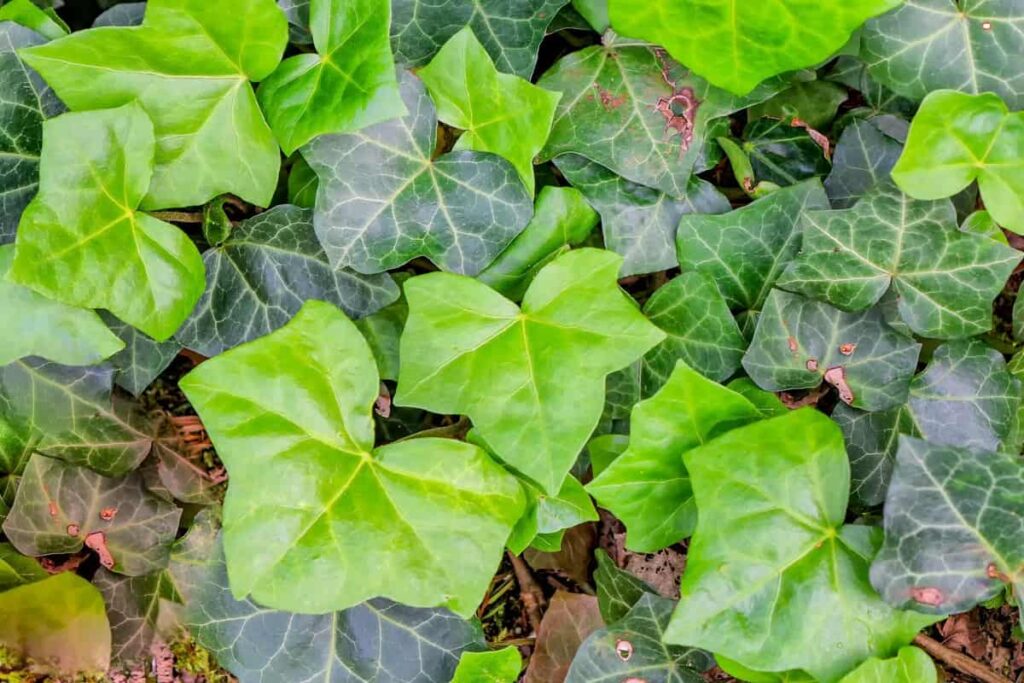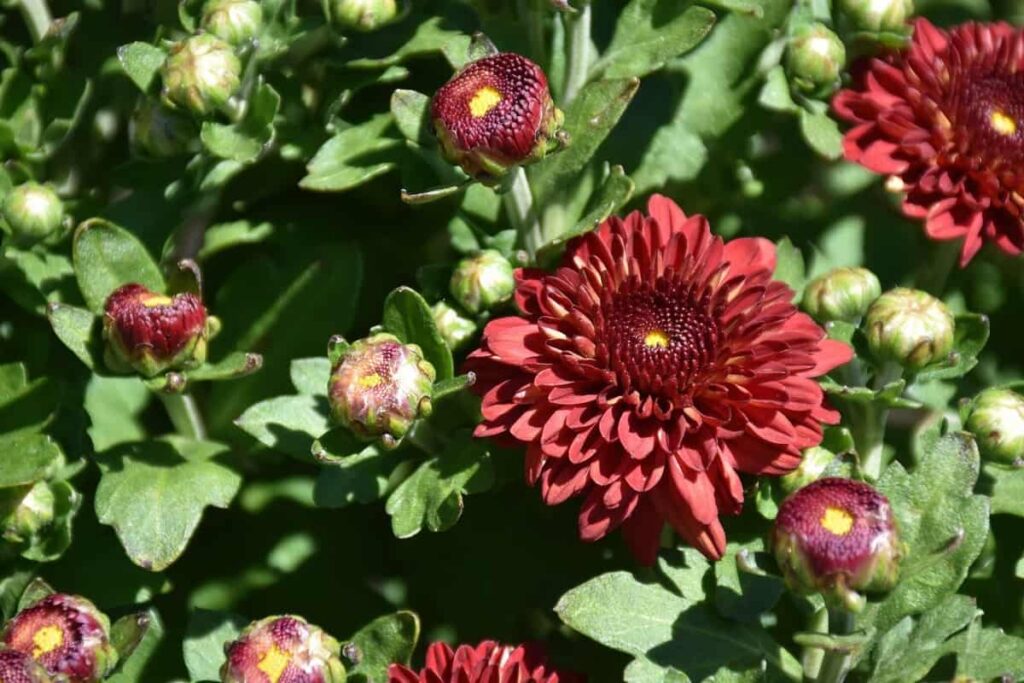Air toxins are chemical compounds that can cause health problems when inhaled. These toxins can come from many sources, such as paint and carpets, smoke from cigarettes and candles, and chemicals in household products. Air toxins can inflame the lungs and cause respiratory problems, such as coughing and wheezing.

Indoor plants can help remove air toxins from your home. There are many types of indoor plants that can remove air toxins. Choose plants according to the type of toxin your home or office produces. Not only do they add beauty and life to a room, but they also help clean the air. These small additions will help improve your indoor environment and eliminate harmful toxins in the air.
Top 15 indoor garden plants to remove air toxins
Snake plant
Snake plants are an ideal indoor plant for removing air toxins. They have long, narrow leaves that can easily reach into small spaces and remove pollutants. To enjoy these plants indoors, place them in a location with moderate light levels and plenty of airflows. Avoid locations near heaters or other areas where the temperature might rise quickly. Water these plants sparingly during the winter months to allow them to conserve energy. The Snake plant is a popular indoor plant because it needs little water, grows quickly, and has few pests.
Aloe Vera
Many plants can be used to remove air toxins, and Aloe Vera is one of the most popular. Aloe Vera can be grown indoors in a pot or good light. Aloe Vera has a high tolerance for low light and moisture. Aloe Vera plants are great for removing air toxins from the air. They have long, spiny leaves that can capture airborne pollutants and chemicals. Aloe Vera plants can be placed in any room to remove smoke, fumes, and chemical odors.
In case you missed it: How to Propagate Aloe Vera: Without Roots, Leaves, Cuttings on the Ground and in the Water

Bromeliad
Bromeliads are succulents that can be attractive to any indoor garden. Bromeliads require very little water, making them ideal for air purification plants. They tolerate low light levels and can even thrive in indirect sunlight. Bromeliad leaves often have a variegated pattern, and the flowers may be white, yellow, green, or blue.
These plants typically require low light levels, so they make great choices for people who don’t have much space for a large garden. Bromeliads also need warm temperatures to survive, so keep them away from cold drafts and out of direct sunlight during the hottest parts of the day.
Golden Pothos
- Golden Pothos is an easy-to-grow houseplant that removes air toxins. This plant grows quickly and has broad, lacy green leaves on top and white on the bottom. Golden Pothos is tolerant of low light and can be propagated by division or root cuttings. This hardy vine is perfect for removing pollutants from the air, including chemicals, smoke, and pollen. Not only is it effective at removing these unwelcome guests from your space, but the Golden Pothos is also attractive and easy to care for.
- Tie the vine up or place it near an open window during peak pollution times to take advantage of its cleaning abilities. You can also keep the plant in a container and move it around often to ensure that all areas of your home are regularly treated. The leaves are covered in oil glands that help spread oils over the leaf’s surface, trapping small particles and chemicals in the oil. This plant can be placed near a window or other sources of light, as this will help to encourage growth and increase oxygen production.
In case you missed it: Common Pothos/Money Plant Problems: How to Fix Them, Solutions, and Treatment

English Ivy plant
- If you want to add air purification to your indoor environment, various plants can help. One such plant is the English Ivy. This hardy perennial can be grown in multiple locations, including indoors, and is known for its ability to remove toxins from the air.
- To get the most out of this plant’s purifying abilities, it’s best to grow it in a location with good air circulation. You can also water it regularly, as English Ivy is particularly prone to dehydration. This plant grows quickly and has lush foliage, making it an ideal choice for removing pollutants from the air. English Ivy also produces leaves that absorb pollutants, including volatile organic compounds and nitrogen dioxide.
- English Ivy grows rapidly, so it can quickly cover large areas. Furthermore, its leaves are very small and thin, making it an efficient filter of air pollutants. It is not recommended for homes with high pollution levels, as this plant may not be able to remove all harmful toxins from the air effectively.
Areca palm
Areca palm is a great indoor plant to remove air toxins. This popular houseplant grows quickly and has a long life span. Areca palm can also help clean the air of smoke, pet dander, and other pollutants. Areca palm is the most popular indoor plant because it is easy to grow and relatively low-maintenance. The leaves are glossy, green, and deciduous, making them ideal for removing airborne toxins. Areca palms are also excellent plants for adding some greenery to small spaces.
In case you missed it: How to Grow Petunias from Seed: A Beginners Guide to Planting to Harvest

Jade plant
The Jade plant is an excellent choice if you are looking for an air-purifying plant because it has large leaves that can quickly clean the air of pollutants. The leaves of the Jade plant also have a strong fragrant scent, which may help to improve your mood. Additionally, Jade plants have a high-water content, which allows them to absorb toxins. Jade plants are attractive additions to any room, making them a popular choice for interior designers and homeowners.
Spider plant
- Spider plants are an excellent option for removing air toxins due to their high levels of carbon. These plants remove harmful chemicals before they can harm you or your pets. Spider plants are an excellent option for those with allergies or asthma because they help to clean the air.
- Spider plants grow quickly and can be used as an indoor garden in a few weeks. These plants need little water and love indirect light. They require no care other than occasional deadheading and will quickly fill any room with their lovely foliage.
- Not only are they beautiful and effective at removing toxins and moisture from the air. Spider plants are great for areas with high humidity levels, such as bathrooms. Spider plants require very little water and can survive in low-light conditions.
Rubber plant
Several plants can help remove these pollutants. One such plant is the Rubber plant. This hardy perennial grows well in low-light conditions and is attractive and easy to care for. The Rubber plant is the best choice for removing air toxins because it has dense, broad leaves that can absorb many pollutants. You can also grow the Rubber plant in a pot to move it around to wherever you need it. So, if you want a handy plant that can help reduce your exposure to harmful indoor air pollutants, consider adding a Rubber plant to your home.
In case you missed it: Top 12 Attractive Foliage Plants for a Sunny Balcony Garden

Peace Lily
- When designing an indoor garden, it is essential to consider the air pollutants that can be released from various items in the home. Some plants that can help to remove these pollutants include the Peace Lily. The Peace Lily is a beautiful and easy-to-care-for indoor plant that can help to remove air toxins. The Peace Lily is a climbing plant that can grow up to 3 feet tall. It has clusters of white, trumpet-shaped flowers that bloom between May and July.
- The Peace Lily is known for its ability to clean the air of toxic particles such as carbon monoxide, benzene, formaldehyde, and xylene. These toxins can cause respiratory problems in humans. By growing the Peace Lily in your home, you can help to reduce exposure to these harmful chemicals. Peace Lilies are hardy plants that can handle a wide range of indoor temperatures, making them perfect for any room in the house.
- Peace Lilies are easy to grow and require very little maintenance. They will do well in low-light conditions, making them an excellent choice for rooms with little natural light. To keep Peace Lilies growing healthy and beautiful, it is essential to water them regularly and fertilize them every few weeks.
Boston Fern
Boston Fern is a great plant to remove air toxins from home. It’s easy to grow, and its leaves can be easily removed for cleaning. Boston Fern is a popular indoor plant because of its ample leaves and attractive spikes of white flowers. It can remove airborne toxins, making it a good choice for people with asthma or other respiratory conditions.
Chinese Evergreen
Chinese Evergreen plants are perfect for small spaces because they need less water than other air-purifying plants and can easily move from room to room. They are effective at removing smells and toxins from the air. They are low maintenance and require little attention to keep them healthy. They can be placed near any area of the home that needs assistance with odor control, such as the living room or bedroom.
Weeping Fig Tree
Indoor air-purifying plants like Weeping Figs remove pollutants that can cause allergies and asthma symptoms, so they’re a great choice if you have kids or pets. This beautiful evergreen tree is perfect for removing benzene and other chemicals from the air. It’s also a good choice for pets because it has antimicrobial properties.
Chrysanthemums
A single Chrysanthemum can remove up to 98% of harmful air pollution. Chrysanthemums also have other benefits for your indoor air quality. They work well as humidifiers, reducing room humidity levels and helping prevent mold and other fungi from growing. Additionally, Chrysanthemums release oxygen throughout the day, which benefits people with allergies or asthma.
In case you missed it: How to Grow Chrysanthemums from Seed to Harvest: Planting and Care Guide for Beginners

Bamboo palm
The Bamboo palm is a houseplant that can grow up to eight feet tall, with a trunk up to two feet in diameter. This plant is easy to grow, requiring only regular watering and occasional fertilization. It is also one of the simplest indoor air-purifying plants to care for. To clean the Bamboo palm’s leaves, place the palms face down in a bucket of water and let them soak for several hours. To clean the trunk and roots, pour about two inches of warm water into a pot and place the Bamboo palm into it. You can use a wire brush to scrub away any dirt or residue.
Conclusion
The indoor environment can be a breeding ground for air toxins. Plants can help to remove these toxins and improve the air quality in your home or office. When choosing plants for your indoor garden, it is essential to consider the location and other factors such as sunlight exposure and temperature.
Indoor plants can help to reduce air toxins in your home. Some of the best plants for this purpose remove particular air pollutants, such as carbon dioxide, water vapor, and pollen. Choose plants that will remove the type of pollutant you are concerned about.
- How to Grow Hibiscus from Flower
- Plantation Ideas for Home Decoration: A Beginners Guide
- Flower Garden Designs and Layouts for Beginners
- Planting and Spacing Techniques in Papaya: A Beginner’s Guide
- Growing Gold: Essential Techniques for Planting Pineapples
- How to Make Kalanchoe Plant Bushy: Home Remedies and Solutions
- 11 Reasons Why Your Gardenia is Not Blooming: Home Remedies and Solutions
- Eco Elegance: The Guide to Designing a Drought-Tolerant Landscape
- Gardening on a Slope: Strategies for Hillside Landscaping
- Nourish and Flourish: Top Organic Mulches for Thriving House Plants
- Everything You Want to Know about Indian Mogra Flower: Discover Uses and Growing
- Green Thumb Success: Expert Tips for Cultivating Greenhouse Pumpkins All Year Round
- Maximize Growth & Flavor: The Ultimate Guide to Companion Planting in Herb Gardens
- How to Control Rhododendron Problems Naturally: Home Remedies and Organic Ways to Fix Them
- Natural Magic: The Remarkable Benefits of Cinnamon for Plants
- Best Steps to Revive Dying Tulip with Natural and Organic Treatment
- 10 Reasons Why Your Angel Trumpet is Not Blooming: Remedies and Treatment
- How to Fix Periwinkle Leaf and Flower-Related Problems: Natural Remedies and Solutions
- How to Fix Zinnias Leaf and Flower Problems: Discover Natural and Home Remedies
- Organic Steps to Induce Lemon Tree Flowers: A Comprehensive Guide
- Bloom Booster: Crafting the Perfect Homemade Bougainvillea Fertilizer
- Optimizing Growth: A Guide to Applying NPK Fertilizer for Potted Plants
- 10 Best Homemade Fertilizers for Rubber Plant: DIY Recipes and Application Method
- How to Boost Female Pumpkin Flowers: Effective Steps for More Flowers and High Yields
- Transform Your Indoor Garden: Top Benefits of Pink Salt for Houseplants
- 10 Best Homemade Fertilizers for Peacock Plants (Calathea): Easy DIY Guide
- Unlock Blooms: 9 Reasons Why Your Potted Chrysanthemum is Not Blooming
- 8 Reasons Why Your Potted Hibiscus is Not Blooming: Fix it with Simple Solutions
- Unlock Blooms: 9 Key Reasons Your Potted Frangipani Won’t Flower
- 10 Reasons Why Is My Ice Plant Not Blooming: Remedies and Treatment
- 10 Reasons Why My Potted Hydrangea Not Blooming: Treatment and Remedies
- 10 Reasons Why is My Wisteria Not Blooming: Remedies and Treatment
- 10 Reasons Why is My Goldfish Plant Not Blooming: Remedies and Treatment
- Maximize Your Space: Ultimate Guide to Balcony Gardening with Grow Bags
- 10 Reasons Why Your Iris is Not Blooming: Remedies and Treatment
- 10 Reasons Why Your Anthurium Plant is Not Blooming: Treatment and Remedies